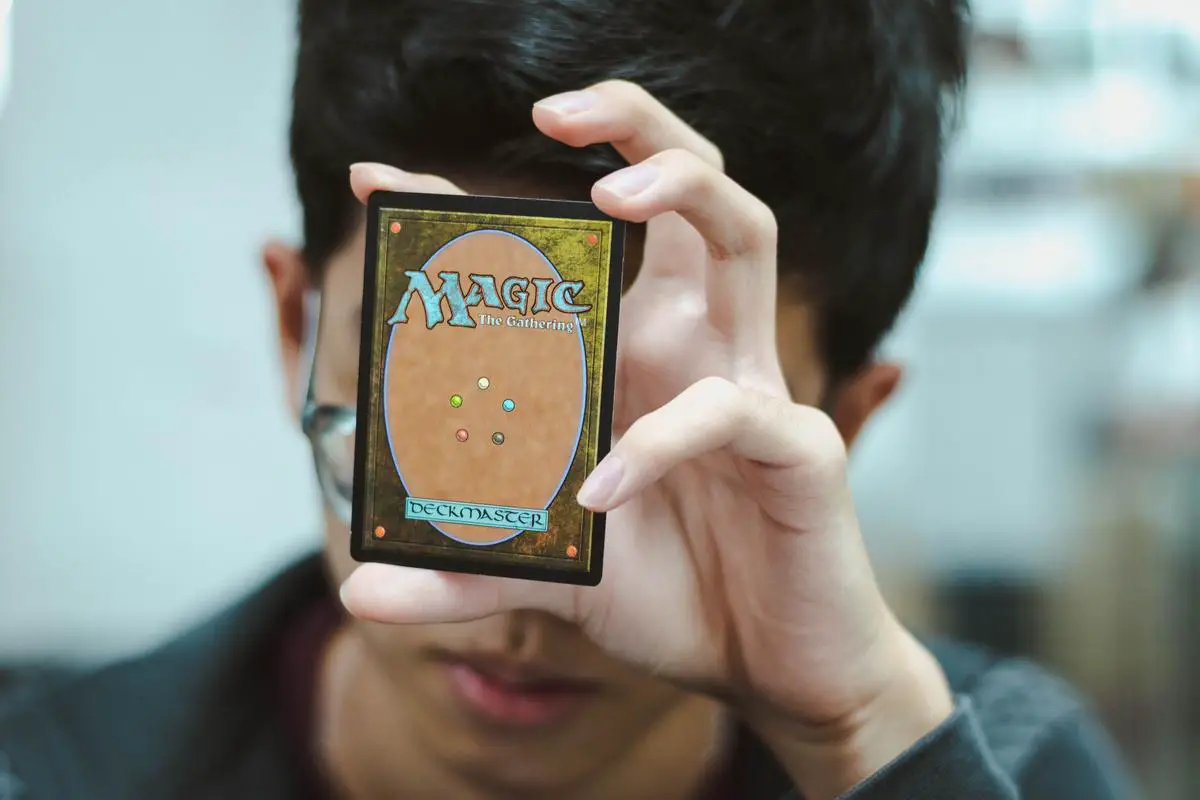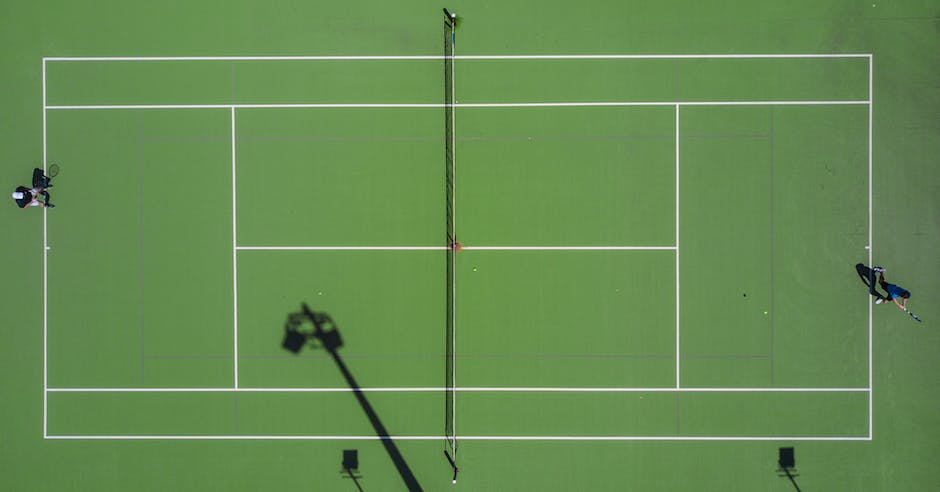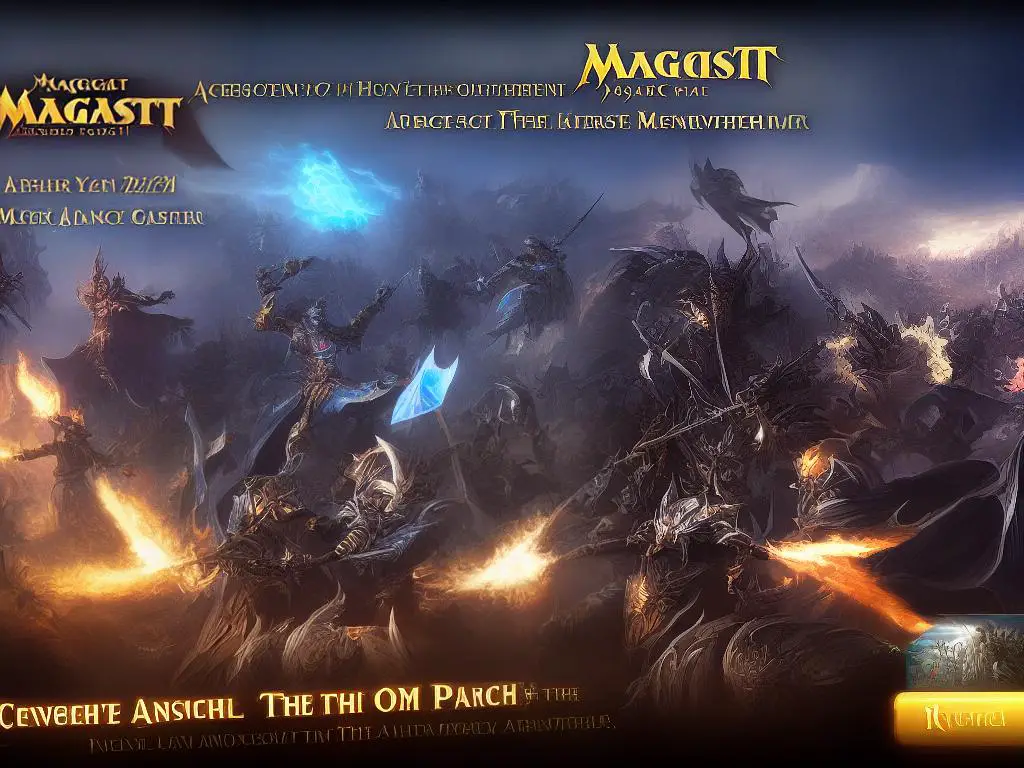As a groundbreaking trading card game that captured the hearts and strategic minds of players around the globe, Magic: The Gathering (MTG) has expanded its influence beyond casual gatherings into an organized, competitive landscape. From small-scale games between friends to international tournaments, MTG has evolved into a thriving eSport that showcases the prowess of its most dedicated players. This essay delves into the multifaceted world of MTG tournaments, chronicling their inception and examining their ongoing impact on the game’s growth and development.
Origins of MTG Tournaments
Magic: The Gathering (MTG), a trading card game created by mathematician Richard Garfield, was first published in 1993 by Wizards of the Coast. The game quickly gained popularity and enthusiasts began organizing informal gatherings to play and trade cards. Recognizing the potential for competitive play and fostering a sense of community, Wizards of the Coast introduced the first organized tournaments in 1994, which ultimately played a significant role in the growth of the game.

Photo by wayneshin on Unsplash
MTG Pro Tour and World Championship
Among the most prominent MTG tournaments are the Pro Tour and the World Championship. The Pro Tour was first established in 1996 as a series of invitation-only tournaments consisting of top players from around the world, building on the success of the earliest MTG competitions, such as the 1994 World Championships. The annual MTG World Championship began in 1994, spotlighting the world’s best players as they compete for the title of World Champion. Both events feature various formats such as Standard, Modern, and Booster Draft, with the Pro Tour often focusing on recent card releases and the game’s current metagame.
Legacies of the Game’s Best Players
Throughout their history, these tournaments have solidified the legacies of some of the game’s best players. Hall of Fame pro players like Jon Finkel, Kai Budde, and Paulo Vitor Damo da Rosa have earned some of their most significant career victories at Pro Tours and World Championships. These events have also been home to some of the most iconic moments in MTG’s competitive history, such as Craig Jones’s famous “Lightning Helix” topdeck or Shahar Shenhar, becoming the youngest and only two-time MTG World Champion in 2013 and 2014.
The Competitive Future of MTG
The Pro Tour and World Championship tournaments have also shaped the competitive future of the MTG landscape. In particular, the Pro Tour’s focus on recent card releases has played a significant role in how players approach deck-building and strategy in each new set’s competitive environment. This, in turn, has led to the development of popular and innovative decks that have had a lasting impact on the game, such as Affinity during the Mirrodin era or the dominance of Necropotence during the late ’90s.
The Platform for Aspiring Professional Players
Beyond individual accomplishments and the influence on the metagame, the Pro Tour and World Championship events have become a platform for many aspiring professional players. By participating in these prestigious tournaments, players have the opportunity to make a name for themselves in the competitive MTG community and potentially earn sponsorships, further enabling them to pursue careers in professional gaming. The events also serve to foster camaraderie among the international community of players, as they compete together, share knowledge and strategies, and form bonds that can last a lifetime.
Advancing the Competitive MTG Scene
The Pro Tour and World Championship have played a crucial role in promoting and advancing the competitive MTG scene. These prestigious tournaments create unforgettable memories for players, fans, and spectators while also shaping the game’s metagame. As an integral part of the Magic: The Gathering community, the Pro Tour and World Championship will continue to drive the development and growth of competitive MTG as long as new sets and innovative strategies keep emerging and evolving.

Grand Prix and SCG Tour
The Grand Prix and Its Connection to the Pro Tour
Another significant event in the MTG competitive landscape is the Grand Prix (GP). Managed and run by Wizards of the Coast and established in 1997, this series of Magic: The Gathering tournaments are held worldwide. GPs have grown in size, attracting thousands of participants to each event. Typically spanning three days, these large-scale tournaments include two days of Swiss-style rounds followed by a cut to the top 8 players who compete in a single-elimination finale. The GPs offer a variety of formats such as Standard, Modern, Legacy, Team Limited, and Sealed, catering to a diverse range of players. Most importantly, the GPs serve as a means for players to qualify for the more prestigious and elite Pro Tour, further establishing their connection and importance in advancing the competitive MTG scene.
The StarCityGames Tour
The StarCityGames (SCG) Tour is another important part of the MTG tournament scene, organized by the website and store StarCityGames.com. Established in 2000 as the StarCityGames Open Series, the SCG Tour is a set of tournaments that take place across the United States, featuring a mix of Standard, Modern, and Legacy formats. Similar to GPs, the SCG Tour culminates in an Invitational event, with competitors vying for cash prizes and the chance to participate in the seasonal Players’ Championship. The SCG Tour has become known for its high level of competition, live streaming coverage, and strong community support.
Impact on MTG
Both the Grand Prix and SCG Tour have significantly impacted how MTG is played and strategized among enthusiasts. The high-profile nature of these tournaments drives innovation and creativity within the competitive scene. Players are constantly seeking novel card combinations and tactics to outwit opponents and win a share of the prize pool. Consequently, the success of certain decks or cards at these prominent tournaments often influences trends in MTG’s metagame, which in turn informs decisions made by local players and even Wizards of the Coast itself in terms of card design and set development.
Connecting Players
Furthermore, the Grand Prix and SCG Tour connect local and international players in various ways. GPs in particular are hosted in numerous cities worldwide, bringing in players from many different countries to compete and share their love for MTG. These tournaments often feature side events and attractions catering to less competitive or casual players, fostering a more inclusive environment. Similarly, the SCG Tour creates a network for local players by organizing smaller scale Open, Classic, and Regional events and offering extensive coverage of those competitions via their website. Beyond fostering connections among players, these tournaments also create opportunities for artists, vendors, and enthusiasts to come together and contribute to the community.
Impact on Competitive Landscape
The Grand Prix and SCG Tour have significantly shaped the competitive landscape of MTG tournament history. These events promote competitive play and establish benchmarks for players to test their skills against each other, striving to reach the prestigious professional level. Additionally, the Grand Prix and SCG Tour showcase up-and-coming talents, creating new stars within the community who inspire other players and further drive interest and growth in the competitive scene. By offering financial incentives in the form of cash prizes to top-performing players, these tournaments also help establish tangible goals for aspiring competitors to pursue, ultimately fostering growth and ambition within the MTG tournament scene.

Photo by seanbenesh on Unsplash
MTG Online Tournaments
Meanwhile, Magic: The Gathering Online (MTGO) has expanded the game’s competitive reach by providing an online platform for players to participate in tournaments from the comfort of their own homes. Introduced in 2002 by Wizards of the Coast, MTGO brought an alternative to physical card gaming with various formats such as drafts, sealed tournaments, constructed events, and leagues. Online tournaments often replicate in-person events like Grand Prix and Pro Tour Qualifiers, further bridging the gap between physical and online play. MTGO has made it possible for players worldwide to engage in competitive play without traveling to physical locations, broadening the accessibility and reach of the Magic: The Gathering community.
Roughly two decades after the inception of MTGO, Wizards of the Coast released Magic: The Gathering Arena (MTGA) in 2018 as an additional platform for digital gaming. MTGA offers a more user-friendly, visually appealing experience with an emphasis on overall gameplay experience. Due to its easier learning curve, Arena has drawn in newer players and even attracted more casual fans of Magic: The Gathering. Similar to its older counterpart, MTGA provides both limited (draft and sealed) and constructed formats, while also introducing its exclusive rotating events, such as Singleton or Brawl.
The digital platforms of MTGO and MTGA have also expanded the competitive landscape of Magic: The Gathering by giving rise to numerous online tournaments that feature indirect and direct qualification pathways for prestigious in-person events. For example, MTGO hosts the Magic Online Championship Series (MOCS), an tournament series comprising several preliminary events throughout the year. Top finishers of these events qualify for a season-ending championship event with a significant cash prize pool and Pro Tour implications.
Higher-profile online events held within both platforms include the MagicFest Online and Magic Arena Qualifiers, which provide players the opportunity to qualify for Players Tour or even the Magic World Championship. Participants in these events range from Grand Prix regulars to Magic Pro League and Rivals League members – the top players in the competitive scene. These digital platforms have also played a crucial role in maintaining the competitive aspect of Magic: The Gathering, particularly during the COVID-19 pandemic, when in-person events were impossible to conduct.
In addition to the high-stakes events on both MTGO and MTGA, lower-level online competitions cater to the wider Magic: The Gathering public. Weekly qualifiers with smaller prize pools have attracted both experienced and newer competitors, fostering the growth of the competitive community. This inclusive atmosphere has improved the diversity of players, expanding competitive play beyond traditional in-person events. The development and success of MTGO and MTGA have significantly impacted the history of MTG tournaments, making the game more accessible and connected than ever before.

Notable Players and Strategies
Magic: The Gathering Tournaments and Notable Players
Over the years, prominent players have left their mark on the Magic: The Gathering (MTG) tournament scene, influencing others with their innovative strategies and inventive deck creations.
Jon Finkel, one of the most successful and respected players in the MTG community, is a prime example of this influence. Hailing from the United States, Finkel’s exceptional deck-building skills and strategic playstyle have earned him numerous top finishes in various high-level events such as Pro Tours, World Championships, and Grand Prix tournaments. His impact extends globally, inspiring countless players to refine their skills and create unique deck archetypes.
Moreover, the MTG tournament scene has been shaped by several other notable players over the years:
- Kai Budde from Germany, often referred to as ‘The German Juggernaut,’ dominated the competitive scene in the late 1990s and early 2000s with his unparalleled skills and consistency.
- Paulo Vitor Damo da Rosa (PVDDR) from Brazil, who boasts the distinguished accomplishment of being the only player to reach the finals of the prestigious Players Tour event four times, winning the title in 2020.
Evolution of Successful Strategies
A significant aspect of MTG’s tournament history is the continual evolution of successful strategies and deck types.
Each new set release introduces new gameplay mechanics, and innovative players seize the opportunity to create fresh competitive strategies.
One such example is the emergence of “Affinity,” an artifact-based deck that took advantage of the synergy between low-cost artifacts and powerful cards from the Mirrodin block. The deck showcased the ability of its creator, Robert Maher, to recognize the potential in a previously underutilized card, Arcbound Ravager, and develop a winning strategy around it.
Another example worth mentioning in terms of innovative strategies is the “Caw-Blade” deck.
This deck, which revolved around the synergy between Squadron Hawk and powerful equipment cards, was first popularized by French player Guillaume Wafo-Tapa at Pro Tour Paris in 2011.
Throughout the years, Caw-Blade would dominate the competitive scene, eventually leading to the banning of key components in Standard, such as Jace, the Mind Sculptor and Stoneforge Mystic, to maintain a balanced metagame.
Continuous Push for Innovation
The competitive MTG meta is in a constant state of evolution, primarily due to the relentless creativity and passion of the game’s dedicated players. As new sets are released and older cards rotate out of standard play, innovative minds like Reid Duke and Brian Kibler continue to push the boundaries of what is possible within the game’s framework.
Duke, an influential deck-builder, gained recognition for his groundbreaking take on the “Modern Jund” deck, which became a staple of the format for years. The unwavering commitment of these standout players to constantly challenge the status quo is what makes Magic: The Gathering a dynamic competitive sport and an engaging source of entertainment for both participants and spectators.

Impact of Tournaments on MTG Growth
Magic: The Gathering Tournaments
Since its inception in 1993, Magic: The Gathering (MTG) tournaments have been instrumental in the growth and development of the game. The high level of competition combined with the social aspect of these events has consistently fueled MTG’s popularity over the years.
One of the earliest and most notable milestones in MTG tournament history was the first Magic World Championship, held in 1994 in Milwaukee, Wisconsin. This event not only served as a catalyst for the entire MTG community, but also introduced the game to a wider audience. The championship garnered increased interest in the game, paving the way for the creation of the Pro Tour.
The Impact of the MTG Pro Tour
The establishment of the MTG Pro Tour in 1996 marked a turning point in the game’s competitive landscape. The Pro Tour introduced a series of professional-level tournaments with large cash prizes, which helped to draw more players into the competitive scene. The Pro Tour and other high-level tournaments, such as Grand Prix events, have attracted talented players from around the world, creating a global community of dedicated MTG enthusiasts. The increased visibility and prestige associated with these tournaments have contributed to the game’s growth, both in terms of its player base and overall popularity.
Community-Building through MTG Tournaments
In addition to fostering a competitive environment, MTG tournaments have served as a platform for community-building among players. Local tournaments, known as Friday Night Magic events, provide casual players with an opportunity to engage with like-minded individuals and connect with their local gaming community. These smaller, more accessible events have been crucial in promoting MTG at the grassroots level and encouraging participation from players who might not otherwise compete in larger, more high-stakes tournaments.
The Digital Age and the Future of MTG Tournaments
The digital age has further amplified the impact of tournaments on the growth of MTG. Online streaming platforms such as Twitch have allowed players all over the world to watch and engage with live coverage of high-profile tournaments, further spreading the game’s reach and fostering a sense of excitement and camaraderie among viewers. Additionally, Magic Online and the more recent Magic: the Gathering Arena have made it possible for players to participate in digital tournaments from the comfort of their homes, creating new opportunities for players to sharpen their skills and engage with the competitive scene.
The proliferation of third-party websites and content creators has also played a role in promoting the game and its tournament scene. Media outlets such as StarCityGames and ChannelFireball, as well as independent content creators on platforms like YouTube, have produced countless articles, videos, and podcasts analyzing tournament results, providing strategic insights, and keeping players informed about the latest developments in the game. This thriving ecosystem of content has helped to keep the MTG community engaged and informed, inspiring both new and veteran players to hone their skills and participate in tournaments.

Over the decades, MTG tournaments have left an indelible imprint on the game’s growth, trajectory, and player base. From fostering friendships and camaraderie within its community to elevating its best and brightest players onto the international stage, organized tournaments have shaped the Magic experience in meaningful ways. The advent of online platforms has expanded competitive play domains and connected a global network of players, ensuring the continued vitality of MTG’s tournament scene. As a testament to the enduring appeal and depth of Magic: The Gathering, the legacy of its tournaments lives on, fostering passion and strategy for this beloved game.